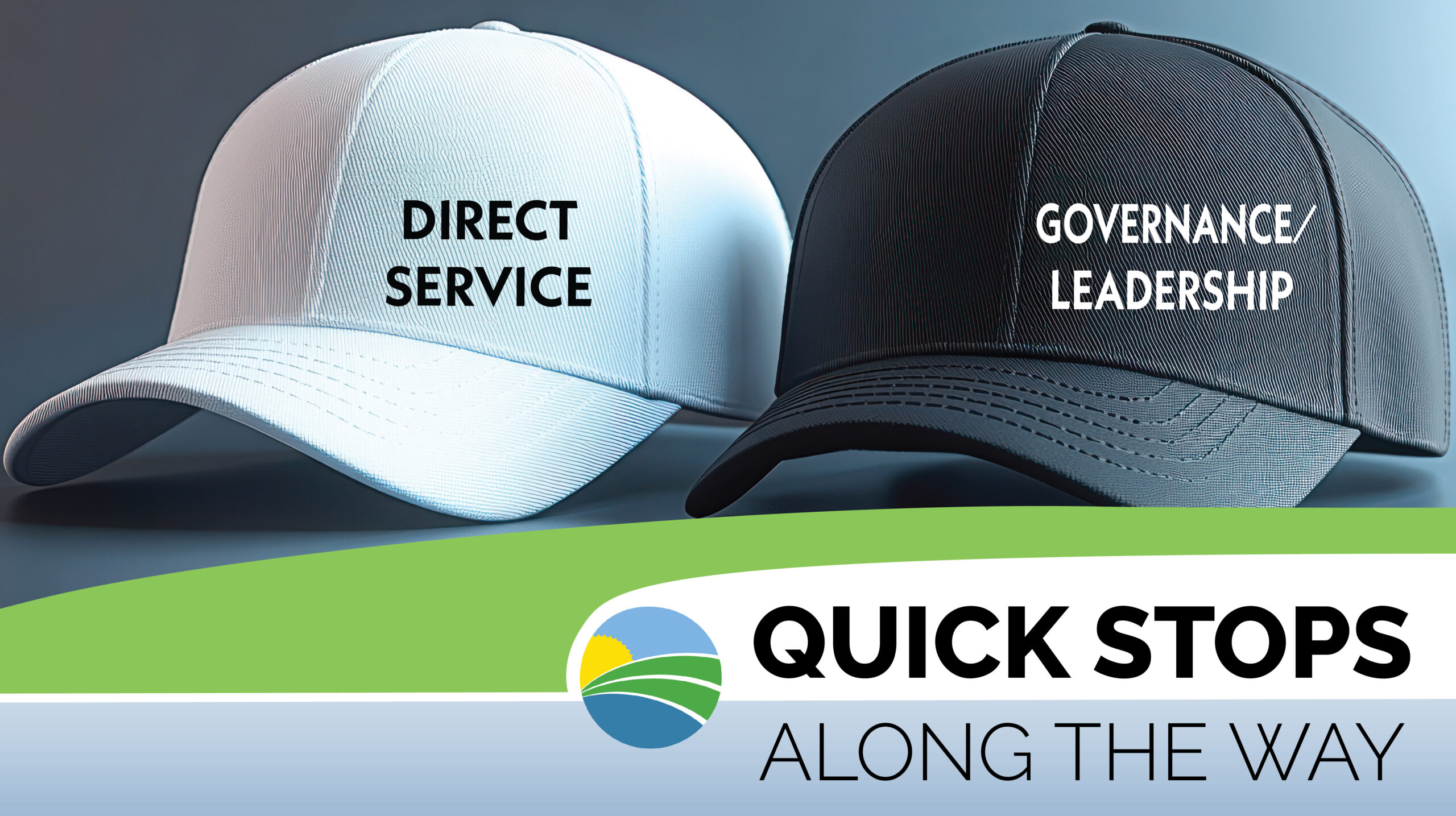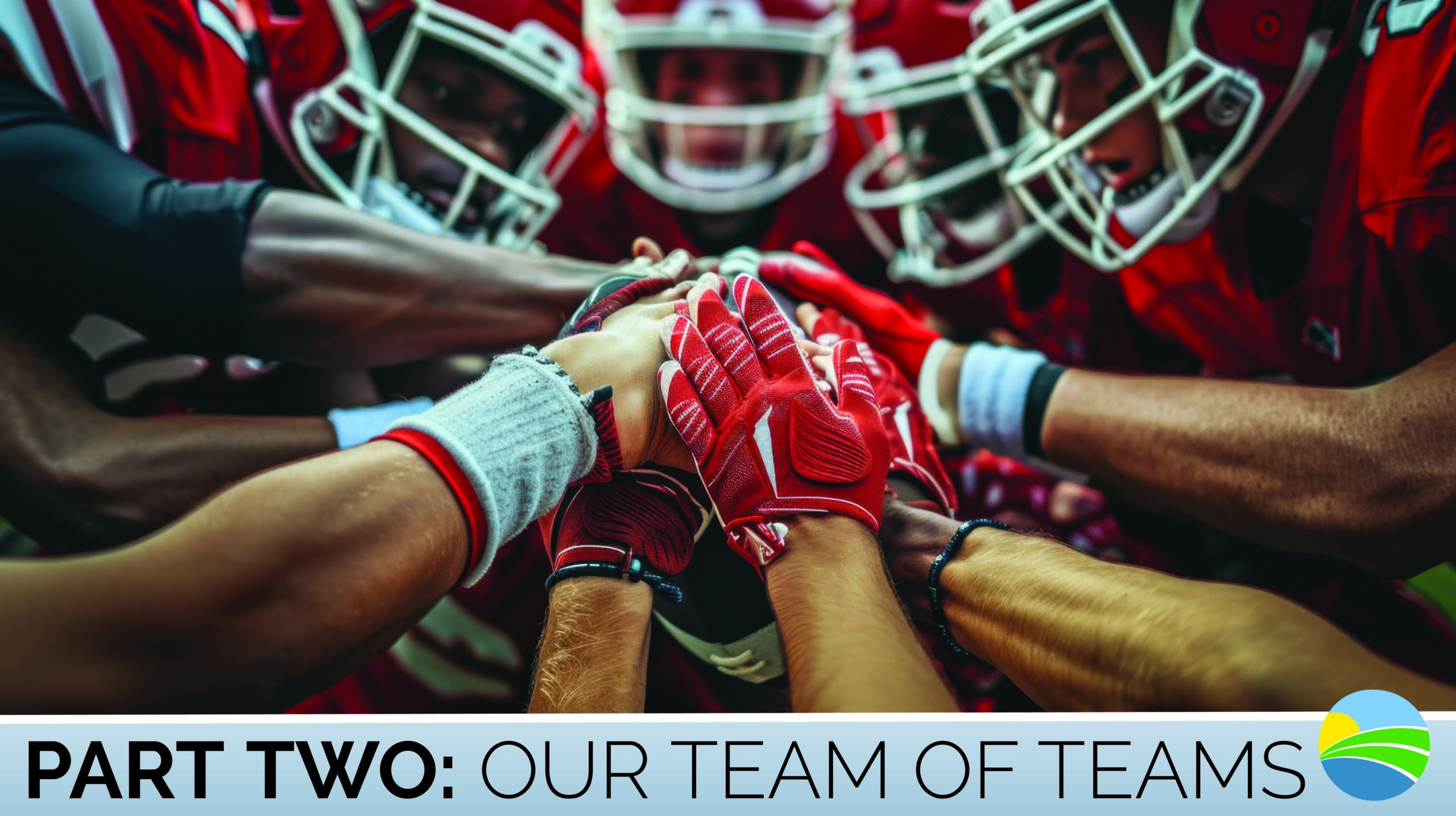Quick Stops Along the Way is a monthly collection of issues, challenges, and thoughts I think you’ll find helpful on the road ahead. Send your questions to me for future Quick Stop posts.
Wearing two hats: A challenge for nonprofit boards
What can a presenter expect from a small group at an after-lunch Friday workshop? My hope: not everyone asleep, a few eyes open, and maybe a good question or two.
As I wrapped up the session, a participant asked: “How can I get my board members to step into their governance role and set aside their direct-service volunteer hats?” It’s a great question—because in many small and mid-sized nonprofits, board members juggle both.
The data behind the challenge
The numbers show why this is so common. The average nonprofit board has about 16 members. Across the U.S., there are roughly 1.6 million registered nonprofits—that’s more than 25 million Americans serving on boards. About 40% of those nonprofits—an estimated 640,000—operate with annual budgets under $100,000. At that size, staff are scarce, so board members often step in to deliver programs, run events, or even handle daily tasks. That’s nearly 10 million people serving on “working boards,” wearing both hats: governance and direct service.
Identify the hat that matters in the moment
So, what can be done? The answer is surprisingly straightforward. The board chair and executive director, if there is one, should begin each meeting with a clear reminder of the role at hand: mission-focused, strategic, financially responsible decision-makers. Direct-service work is valuable, but it’s not the hat to wear in the boardroom.
One attendee shared how her executive director always reminded their small board which hat was needed in the moment—governance or volunteering. A small step, but those few words shifted the conversation and kept the board focused. With so many nonprofits relying on boards that do double duty, knowing which hat to wear—and when—can be the difference between spinning in the weeds and leading with vision.
How can donors contribute beyond the checkbook?
Just as board members balance multiple roles, donors also bring more than one kind of contribution to a nonprofit.
Donors are often described as offering Time, Talent, and Treasure. It’s a simple, easy-to-remember list that captures many ways supporters can engage. Talent alone can take countless forms—professional expertise, specialized skills, or lived experience that strengthens the mission.
But I’d like to suggest a fourth “T.”
Adding a fourth “T” for donors: Thought-Partner
Twice this week I found myself on calls with organizations that didn’t need money—they needed someone to think an idea through. No checkbook required. Just listening, asking questions, and reflecting back what I heard.
It shifts the conversation from “How can we secure a larger gift?” to “How might a donor view the direction we’re heading?”
The Benefits of Thought-Partnership
When you step into a thought-partner role, three things happen:Deeper Understanding – you see the nonprofit’s work and challenges more clearly.
- Deeper Understanding – you see the nonprofit’s work and challenges more clearly.
- Perspective Sharing – the nonprofit sees its mission and strategy through the eyes of a donor.
- Idea Generation – the back-and-forth sparks fresh ideas neither side might have reached alone.
Being a thought-partner may be an unexpected gift for the nonprofit, but it also benefits you. You become a more informed, wiser donor for having invested time in honest conversation.
Whether you’re wearing two hats on a board or adding a new “T” as a donor, the most valuable contribution may be clarity—the ability to know which role matters most in the moment.
Learning at the Leading Edge
“If you skip the discomfort of doubt, you also skip the chance to learn.”
— Charles Sanders Peirce
What questions would you like me to tackle next? Send your philanthropy or nonprofit questions my way, and I’ll answer them in a future post.
© Copyright 2025. Dawn Franks. All rights reserved.


